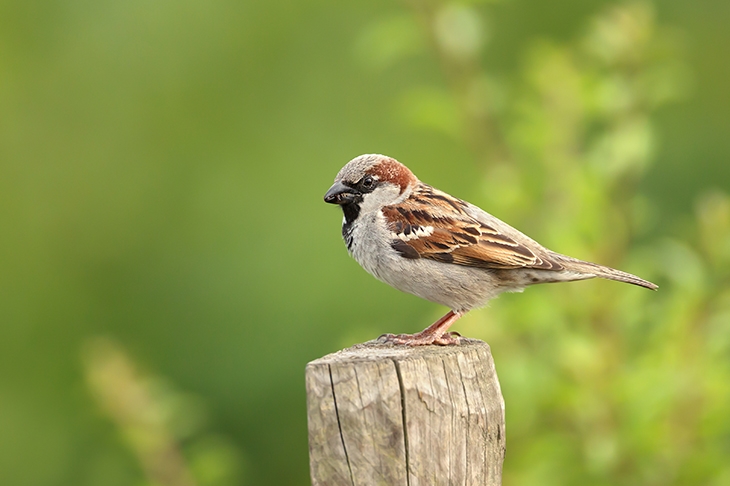By the side of the road from Sudbury in Derbyshire to Ashbourne, there is a lone eucalyptus tree. This is rolling country, small fields bordered by oak, ash and hawthorn. A eucalypt in this unlikely place stands out, its grey-green foliage so different from the more vivid greens of rural England, its pale trunk slimmer, its trailing swishes of narrow leaves more elegant, its thin branches more graceful than those of its stout and stubby British counterparts. You notice.
You wouldn’t if you were in Australia. I have driven through hundreds of miles ofeucalypts in New South Wales, forests of them — they are overwhelmingly the predominant tree — yet never really looked at a native Australian gum tree in the way that, as I passed it yesterday, I looked at this arboreal immigrant to Great Britain. I was put in mind of a hawthorn I pass on the road from Longcliffe towards Elton. Hawthorns are usually in clumps or hedgerows, but this one stands alone in the middle of a close-cropped field. This week in the Peak District the hawthorn blossom we call ‘may’ is at that wonderful point — it is almost a moment — when the clouds of tiny creamy-white flowers blush the faintest of pinks before they yellow and drop. You will be seeing, or half-seeing, this flowery profusion everywhere in the countryside as you read this. But pass that field, and see that small tree standing alone crowned in its annual moment of glory, and somehow you notice, you see something individual, something more.
To experience these rushes of individuation, of focused admiration, I think we need something to knock us off course, however fleetingly: to make us stop, look, and bring our senses in from the general to the particular. Surely all of us have experienced this, half-awakened in a darkened bedroom by the sound of the first blackbird beginning his melody as the first wash of light announces the dawn. Can there be anything more common yet at the same time more sublime than a single blackbird’s song, heard amid silence and in the dark? It is as if he were singing to you alone.
I looked at a sparrow the other afternoon. How many sparrows have I half-noticed, half-heard, as the soundtrack and backdrop to summer in the garden — while never properly acknowledging to myself that here are two of us, me and a particular sparrow, and I am studying him. Have you realised what a beautiful bird this little bundle of ordinariness is? Look at his coat, like a fine Baluchi rug, all tawny browns, russets, caramels, creamy whites and streaks of grey. Why does the Bible say ‘even’ the sparrows are numbered, as though sparrows were examples of the apparently undistinguished? On BBC Radio 4’s ‘tweet of the day’ on Monday I heard the strange cries of the bronze-winged jacana from south Asia, and heard described an extraordinary creature with long legs, flashes of colour and vastly elongated toes. I thought ‘How remarkable!’, but then: ‘But so is a sparrow — remarkable but unremarked.’
Our garden this June is awash with borage. I suppose we rhyme ‘borage’ with ‘porridge’ and ‘awash with borage’ sounds like something you don’t want a garden to be. And indeed it’s a most invasive weed. This borage is everywhere, huge-stalked, waves of it washing through every flower-bed, growing tall and flopping over in ungainly fashion. It spreads faster than you can pluck it up, though it pulls out of the ground with no resistance at all and we tip barrow-loads of the stuff down the bank. But stop hacking back and look at what you’re hacking back: deep green with masses of leaves, a barrage of bottle-green punctuated by thousands of tiny star-shaped flowers of the hottest blue. Each flower is perfect, intense, but so small, and so overwhelmed by the surrounding abundance of foliage, that the overall effect is of a curtain of green, pricked out by points of blue light.
It wouldn’t work in a flower-bed — too many damn leaves — and it doesn’t make a pattern: it makes an impression, formless, profligate, a swath, but you need yards and yards of it. I will remember the flower-beds this summer of 2021, the roses, the camellias, the lilies, the banks of purple ‘rock’, but more than anything we planted, I’ll remember the limitless wash of borage and the smell of wild garlic.
Can we train ourselves to notice things? There are writers and gurus who say we can, but I’m sceptical. The very making of an effort places a cellophane screen — transparent but a screen — between the viewer/hearer/smeller and the target of his perception. I go into our dining room sometimes to look at the portrait of my late mother, but it’s never so direct as the sudden focus when I’m passing and half oblivious, and the portrait catches me, and I swing round, knocked back, to return its glance. You can stare at yourself in the mirror but never see: but when that cross-looking man looks back at you from a shop-window reflection you weren’t expecting, then you’re stopped in your tracks, then you see, then you shudder. Look for too long, though, and down comes the cellophane. Conscious study ought to sharpen, but more often blunts, like saying a word again and again until it loses meaning. We need to be arrested, taken by surprise.
William Blake begins his poem ‘Auguries of Innocence’ with:
To see a World in a Grain of Sand
And a Heaven in a Wild Flower
No, no, this is the opposite of what I mean. Stop looking for Heaven, and look at the wild flower. Stop looking at the forest, and look at this eucalyptus tree, this one. See the world if you think you can, but see a grain of sand in a grain of sand.
Got something to add? Join the discussion and comment below.
Get 10 issues for just $10
Subscribe to The Spectator Australia today for the next 10 magazine issues, plus full online access, for just $10.
You might disagree with half of it, but you’ll enjoy reading all of it. Try your first month for free, then just $2 a week for the remainder of your first year.















Comments
Don't miss out
Join the conversation with other Spectator Australia readers. Subscribe to leave a comment.
SUBSCRIBEAlready a subscriber? Log in